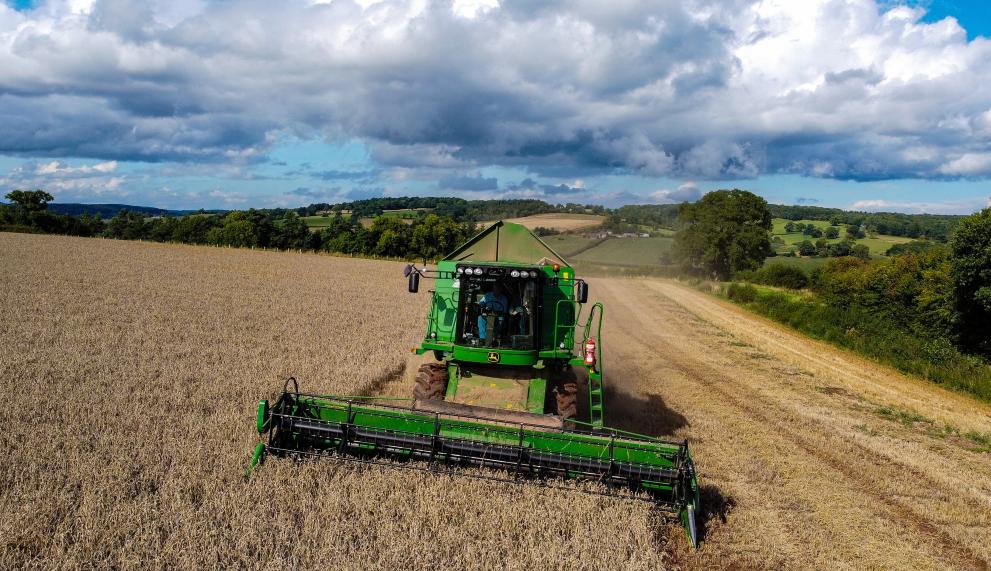
These rules will ultimately replace the different regulatory regimes that currently exist in Member States.
By harmonising at EU level, the technical requirements for the approval of non-road machinery, the new rules will contribute to remove fragmentation in the Single Market and eliminate barriers to the free circulation of such machinery, while ensuring a high level of road safety. The new rules will also reduce compliance and administrative burden, with cost savings estimated at up to €846 million over a period of 10 years.
Currently, there are no harmonised requirements for the use on EU public roads of non-road mobile machinery. As a result, EU manufacturers face a patchwork of legal frameworks that can differ significantly from a Member State to another, which results in delays and significant costs. In addition, end users such as rural contractors or construction companies may not be able to use their non-road mobile machinery in different Member States.
This initiative closes a gap in the Single Market, which celebrates its 30th anniversary this year. The new rules are an example of how the Commission continues to deliver new initiatives to lower barriers and costs, raise standards and increase competitiveness of EU industries.
The proposed Regulation will:
- Complete the Single Market for non-road mobile machinery: The proposal creates a harmonised regulatory framework for the road approval of non-road mobile machinery, ensuring its free movement and facilitating intra-EU cross border use of such machinery.
- Reduce administrative burden and costs for stakeholders: Manufacturers and distributors will be able to request the road approval only once, in one EU country, and the machinery will be accepted for road use in all EU countries. This will facilitate the market entry of new models, eliminate delays linked to multiple approvals, and will allow a reduction of the compliance costs for the industry. Users such as rental companies will benefit from a reduction of the compliance costs, will more easily use and re-sell machinery across intra-EU borders, and will have more choice of non-road mobile machinery, as well as access to more innovative designs. Drivers, in turn, will benefit from harmonised rules that ensure high road safety across the EU.
- Ensure proportionality and legal certainty: the new rules regulate only the most relevant technical aspects and propose a simplified one-step procedure, to be proportionate and take account of the characteristics of non-road mobile machinery, in particular, the fact that they are not normally on the road, and which will be uniformly applied across the EU.
- Establish more effective market surveillance: the Regulation includes market surveillance procedures, including safeguard measures against non-compliant non-road machinery products, aligned to those used in the wider EU legislative framework on products.
Next Steps
The proposed Regulation will be discussed and agreed by the European Parliament and the Council of the European Union before its adoption and entry into force.
In parallel, preparatory work on the delegated acts provided for in this Regulation, such as the detailed technical requirements and tests requested for each of the relevant machine features (braking, steering, lighting, field of vision, masses, dimensions, etc), will be carried out by the Commission in close cooperation with Member States and other stakeholders.
Background
Non-road mobile machinery is used, among other things, for construction, agricultural, garden, forestry, material handling and municipal applications (such as harvesters, sprayers, loaders, excavators, mobile cranes, ride-on mowers, forklifts, telehandlers, street sweepers, lifting platforms or snow cleaners).
The overall non-road mobile machinery EU production value can be estimated at €12.5 billion per year and is manufactured by both large and small companies. Like in other segments of the machinery industry, a small number of large companies control large shares of the market, while SMEs tend to be more specialised in niche markets. It is estimated that SMEs account for 98% of all companies registered and contribute up to 18% of the sector's revenues and 30% of the sector's employment.
The EU non-road mobile machinery sector is a significant producer and strong exporter of non-road mobile machinery globally. Out of the annual production value, 42% is exported to non-EU countries and 54% is traded intra-EU, and only 4% is sold in the EU country where production takes place. This means that non-road mobile machinery producers are extremely reliant on road approval in other Member States or third countries.
Currently non-road mobile machinery is already subject to certain harmonised rules, such as Directive 2006/42/EC on safety as regards the design and construction of machinery, Directive 2014/30/EU on electromagnetic compatibility and Regulation (EU) 2016/1628 on pollutant limits.
For More Information
Proposal for a Regulation on non-road mobile machinery
European Single Market is turning 30
Subscribe to the European Commission's free e-mail newsletter on Internal Market, Industry, Entrepreneurship and SMEs.
Quote(s)
The new regulation for the road approval of non-road mobile machinery will allow this industrial sector a significant reduction in compliance costs and market entry delays. It is a very concrete example of how regulations can help decreasing administrative burden and barriers and unleash the full potential of our Single Market.
Margrethe Vestager, Executive Vice-President for a Europe Fit for the Digital Age - 30/03/2023
Details
- Publication date
- 30 March 2023
- Author
- Representation in Cyprus
